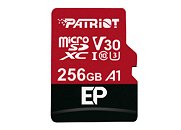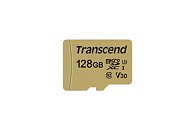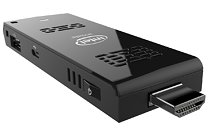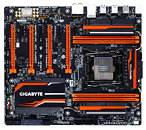
Patriot Launches EP and LX Series A1-rated microSD Cards
Patriot, a global leader in performance memory, SSDs, gaming peripherals and flash storage solutions today announced the immediate availability of its new series of microSD memory cards. Nowadays, just about every gadget is designed to use microSD memory cards from smartphones, tablets, action cams, DV cams to dash cams and even drones - you name it, they all use microSD cards for massive DATA storage and the option to upgrade by just replacing the card. Even some domestic surveillance cameras have started to record directly to microSD cards giving owners an easy way to archive footage as a raw data stream. Recording and storing high-quality video and photos depend on two things, speed and capacity and is why you must select the right microSD card for the job.
Patriot EP series A1-rated microSD cards not only allow users to store apps in the device's microSD card but also enables the device to run those apps from the same memory card. Devices such as smartphones and handheld game consoles can benefit from this greatly as the apps that run on these devices interact with memory space differently. Furthermore, EP series A-1 rated microSD cards meet the UHS Video Speed Class 30 (V30) standards set by the SD Association. These cards offer minimum write speed up to 30MB per second, which supports 4K Ultra HD video recording and is a minimum for many of the latest action cameras, DV cams and drones. In addition, smartphones benefit from the EP series to write high-resolution videos and images with little to no lag. The series offers capacities from 64GB to 256GB, and its read and write speeds are up to 100/ 80MB per second, Patriot EP series microSD cards are perfect for recording the fast-paced action and capturing Full HD and 4K Ultra HD videos smoothly. These cards work equally as well in drone cams, dash cams, smartphones, tablets for 4K ultra HD video capturing.
Patriot EP series A1-rated microSD cards not only allow users to store apps in the device's microSD card but also enables the device to run those apps from the same memory card. Devices such as smartphones and handheld game consoles can benefit from this greatly as the apps that run on these devices interact with memory space differently. Furthermore, EP series A-1 rated microSD cards meet the UHS Video Speed Class 30 (V30) standards set by the SD Association. These cards offer minimum write speed up to 30MB per second, which supports 4K Ultra HD video recording and is a minimum for many of the latest action cameras, DV cams and drones. In addition, smartphones benefit from the EP series to write high-resolution videos and images with little to no lag. The series offers capacities from 64GB to 256GB, and its read and write speeds are up to 100/ 80MB per second, Patriot EP series microSD cards are perfect for recording the fast-paced action and capturing Full HD and 4K Ultra HD videos smoothly. These cards work equally as well in drone cams, dash cams, smartphones, tablets for 4K ultra HD video capturing.


























































